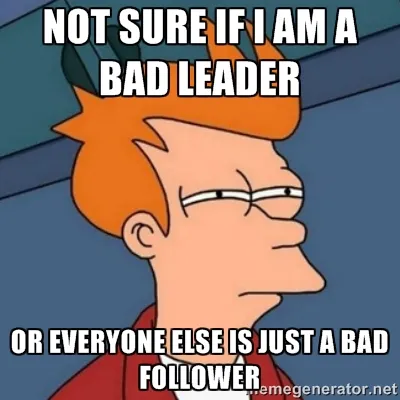How to Become a Leader in Five Steps
Melchior Merlin5 min read

What Is Leadership?
At Theodo, we do not define a leader as some charismatic individual who gets everyone to adopt their own vision of things. Rather, we consider someone to be an effective leader if they always strive to–and succeed at–bringing lasting, positive change to their organization.
How they do this, though, be it through exceptional charisma, ‘vision’, or something else entirely, is not important.
Except it is.
How exactly does one successfully bring about positive change to an organization? In this article, I will present a quick and dirty guide to leadership, through five simple steps.
**Mindset of a Leader[
](http://blog.theodo.fr/wp-content/uploads/2016/07/boss-vs-leader-800x8001.png)**
You have a real problem to fix
The start of the leadership process is often an issue that is bothering you, some pesky thing you’d like to fix. However, you will not be able to convince–let alone lead–anyone if you talk about “some pesky thing I’d like to fix”. You must formulate your issue as a real problem :
- What is bothering you?
- What are the measurable negative consequences to your organisation?
- What do you think the causes of this problem are? (you should have a rough but long list at this point)
Get off your chair !
Leading change in an organization takes a surprising amount of energy. This is why, in any leadership process, the first thing to do is to Get Off Your Chair, start moving things, and do not sit back down until you are done.
Step 1: Identify Your Sponsor
Before taking action, you must observe the organization you are in, and ask people around you about it. Pay attention to the individuals, and to the teams:
- Who seems to be open to change, who seems to be against it?
- How much influence does each person carry? Is it through authority, respect, expertise, or their relationships?
Through these observations, you should be able to identify someone (or several someones) in the organization to sponsor your idea. These are the early-adopters, the experts, the decision-makers. However, they are not necessarily the organisation’s ‘bosses’!
Step 2: Go and Talk to Them
Leadership does not work through email. Leadership only works through one-on-one conversations. So go and talk to them!
This step may sound terribly obvious, and ridiculously easy, but once you are confronted with it in reality, it often turns out to be the hardest of all steps.
Step 3: Be Sincere, Understand, Relate
- Be Sincere:
- Enter the conversation with an open mind. You must be sincerely ready to change your point of view if need be.
- Start your point with why, then work your way to how, and finish with what (this is called the Golden Circle and is the most persuasive communication tool out there)
- Strive to Understand Their Problems:
- Make the debate non-personal, stay focused on facts and rationality
- If they sound opposed to your idea, listen to their problems, and work rationally with your target to reconcile them with your idea.
- Relate:
- Throughout this discussion, it is of utmost importance to empathize with the person. Put yourself in their shoes.
- At the same time, try to make them relate to you, do not be afraid to show some vulnerability and open your feelings to them.
Step 4: Plan How to Address the Problem…
Now that you’ve talked to your sponsor and persuaded them to get on board with your idea, keep the momentum going ! Capitalize on it.
That’s when you Plan (the first step in PDCA) how to address the problem. In order to do so, you should consult with experts on the topic, as well as the people who are impacted by your issue.
Do this fast, one or two days tops (remember: speed is a habit).
Step 5: …and Address It !
Once you’ve got a relatively solid plan, send a recap email to your target and any other important stakeholders.
Finally, go and see them yet again to do what you planned, then check if your plan’s hypotheses are correct, and (re)act accordingly.
Conclusion
So the next time you identify a problem in your organization, treat it not as a hurdle but as an opportunity to improve. As with any opportunity, you should grab it for yourself. You should be the one to bring your idea into being. Not someone “more qualified”, or “with a higher rank”, you.
If, that is, you are willing to follow the above steps and become a leader.

